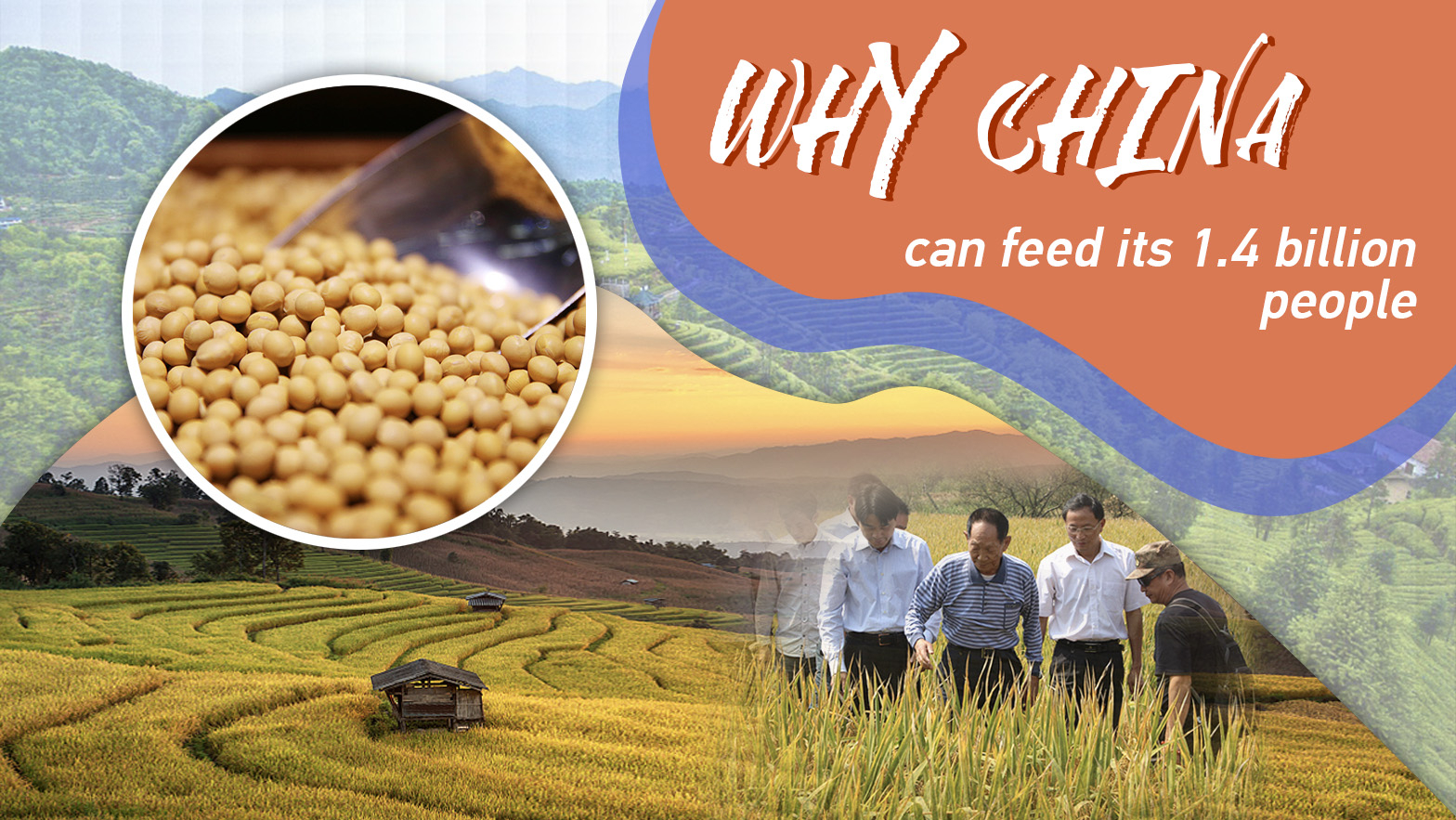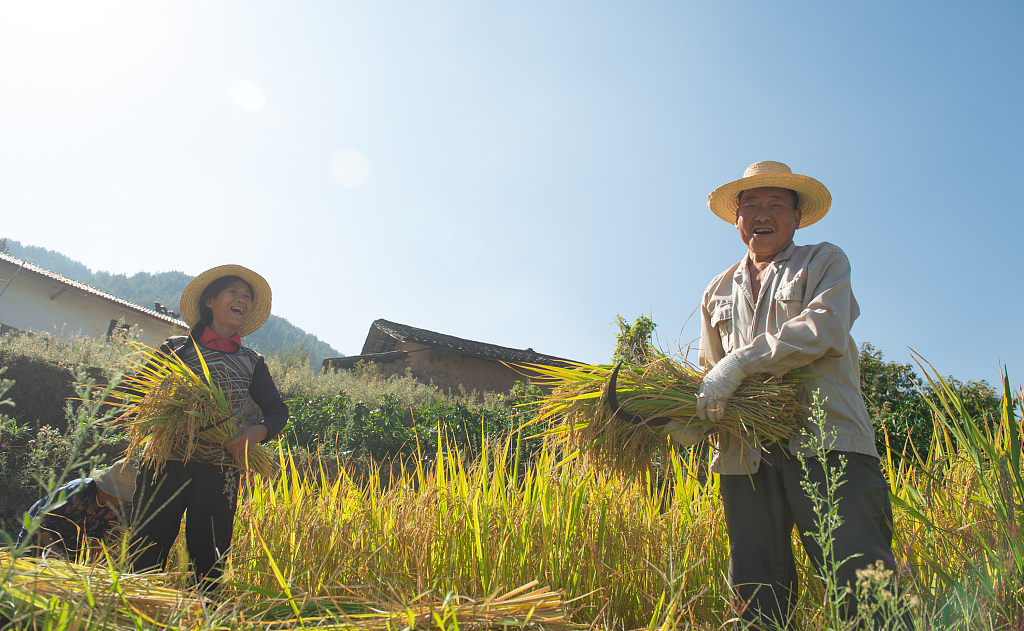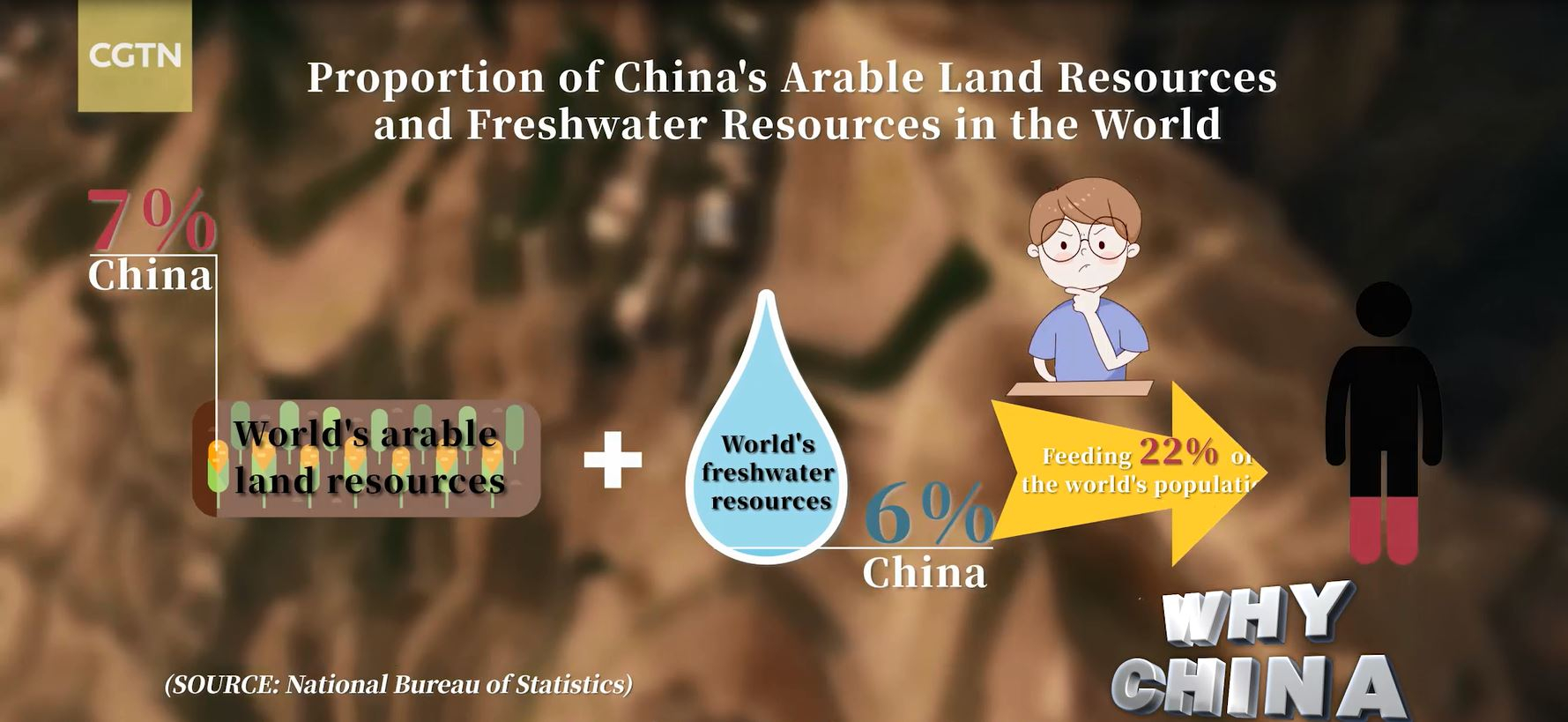18:26

Come September, it's time to reap the bumper harvest of another year.
China's State Council designated the day of the autumn equinox as Chinese Farmers' Harvest Festival last year to highlight the importance of agriculture and honor farmers' work. The festival falls on September 23 in 2019.
In his 1995 book "Who Will Feed China?" American scholar Lester Brown wrote that China's demand for food in the future will have a huge impact on the international food market. With a population of 1.4 billion, how China will feed its people is an issue of global concern.
'Holding the bowl firmly in our own hands'
China considers grain security an utmost priority. By "holding the bowl firmly in our own hands," the nation manages to secure the basis for its survival and development.
China's grain output exceeded in 650 million tons in 2015 after 12 consecutive years of increase, while the production per capita grew from four tons to six tons per hectare.
"Not only did consumption increase, Chinese capacity for agricultural production is also improving rapidly," said Professor Tang Lixia from China Agricultural University.

Farmers harvest rice crops in Zigui County, central China's Hubei Province, September 22, 2019. /VCG Photo
Farmers harvest rice crops in Zigui County, central China's Hubei Province, September 22, 2019. /VCG Photo
China is also the world's largest grain importer, having imported 115 million tons of grain in 2018. Currently, the total global trade volume for grain is about half of the country's grain demand. Meanwhile, the total global trade volume for rice, the main staple food on Chinese dinner tables, is only enough for 25 percent of the country's rice consumption.
"We can produce enough food for ourselves, but it does not mean we don't need international market," Tang said, noting that grain imports are important for balancing the agriculture structure and reducing trade deficit. With a changing economic structure and shifting consumption habits, China's imports for livestock feed like soybeans has grown more than seven times that of the early 2000s.
However, considering China's population size, depending on imports for all food has huge risks. So, building a self-sufficient food supplying system is key to the country's food security.
The primary challenge is resource scarcity as 22 percent of the world's population shares seven percent of the world's arable land and six percent of its freshwater. That's why, as China industrializes, the government has secured 1.2 million square kilometers of arable land as the bottom line.

Development in agricultural science and technology has solved many of China's problems. Thanks to key technologies pioneered by Chinese scientists, such as hybrid-rice, hybrid-wheat and hybrid-maize, the average output of individual grain categories has increased significantly, allowing the country to be 95 percent self-sufficient. That far exceeds the 42.5 percent grain self-sufficiency rate predicted by Brown.
Green and sustainable development
To sustain the high output, it takes more long-term thinking from policymakers. The Chinese government has poured huge investments into agriculture – 10 percent of its total financial expenditure while placing rural work high on its supervision agenda. But there are major environmental considerations, namely soil retrogression and degradation from excessive use of chemical fertilizers and pesticides and over-mining of groundwater.
The UN Food and Agriculture Organization (FAO) estimated that aggravated soil retrogression and degradation affect about 33 percent of the world's soil. In China, it is 40 percent of the total land area. Experts call for a better way to grow crops.
"The overuse of pesticides and fertilizers, on a short term, helps you produce much more. In the long term, it has a huge impact on the soil, on the quality of water," said Vincent Martin, FAO Representative for China and DPRK.
To address the issue, China is advocating for green and sustainable development. In July 2006, the government carried out a national investigation into land contamination and introduced a series of measures to remediate the soil. A micro-irrigation system was developed to reduce water usage.
In January, the Law on the Prevention and Control of Soil Pollution took effect, banning excessive use of pesticides and penalizing use of prohibited ones. Regulating pesticide use can also help lay the groundwork for improving the country's food safety standards from the source.
The good news is that international organizations are working on applying new agricultural techniques, such as "climate-smart agriculture," to help countries increase grain production without harming the planet, Martin said.

China is modernizing its agriculture production. /VCG Photo
China is modernizing its agriculture production. /VCG Photo
China's government is serious about safeguarding grain production, which the livelihoods of over 500 million Chinese farmers rely on, as food security is the anchor of socioeconomic stability and the basis of national security and development. The country's leadership has stressed the vital role of science and technology in developing modern agriculture.
The National Crop Gene Bank of the Chinese Academy of Agricultural Sciences established in 1986 now stores about 877 types of seeds to ensure that a large variety of crops will be available for the next 50 years.
"Having infrastructure and good research is important; then having the means of production is also important. And these are what made China successful in achieving food security," Martin said.
Tang believes China's experience in eliminating hunger in the country sets an example for other developing countries. "China has contributed a visible, tangible and learnable agricultural development solution to the world," she said.